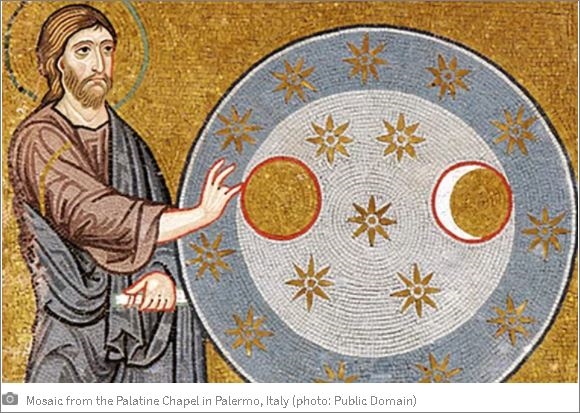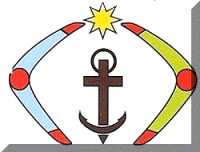
He who made the heavens rules them — so should we be surprised there will be signs in them?
The readings at the start and end of the Church year pertain to the one article in the Creed that is still in the future tense: “He will come again in glory to judge the living and the dead.”
The artwork for today’s Gospel illustration comes from Sicily. It refers to lines (luke 21:25-26) that mention “signs in the sun, moon, and stars” and that “the powers of the heavens will be shaken.”
It should come as no surprise that the coming of Christ will alter the cosmos itself. “The heavens proclaim the glory of God,” declares the Psalmist (Psalm 19:1). The natural world, according to Catholic doctrine, can bring all individuals to knowledge of God (Denzinger 3004).
The fact that somebody “can” does not imply that they “will.” People can close their ideological eyes and demand a “strict wall of separation” between science and faith, refusing to consider anything learned from the physical world that cannot be quantified or experimented on. We live in a bizarre world where many people assume that what is “real” is limited to what can be put in a test tube or weighed on a scale. Philosophy and, even more so, theology are rejected as mental delusions.
But is it possible to quantify love? “There are more things in heaven and on earth than are dreamt of in your philosophy,” Hamlet says in Act I, Scene 5, especially if your theory focuses on a limited vision that refuses to see what can’t be measured.
Under those conditions, the notion that our incredibly complex cosmos, which needs an almost endless number of things to go right in order for it to be where it is, exhibit the order it does, and support life at least on this planet, could suggest something beyond itself is discounted.
The idea that our very orderly universe is more likely the result of design than the fortuitous chance of a monkey at a typewriter banging out The Complete Works of Shakespeare suggests that, yes, there are already “signs in the sun, moon, and stars” for those willing to look beyond their ideological blinders.
Think about our planet. For a long time, detractors claimed that the Copernican revolution, which replaced a geocentric solar system with a heliocentric solar system, degraded humanity. How could we imagine ourselves special on a small planet orbiting a medium-sized star on the outskirts of a galaxy that is just one among many, many others?
But I recall reading an article in First Things — I believe by Stephen Barr — in which he pointed out that, just as in real estate, it’s all about “location, location, location” in astronomy. The background radiation would almost certainly make life as we know it impossible if we lived on a star closer to the centre of the galaxy with significantly higher stellar density. If we lived further out, say, around a massive star, the gravitational pull of the star would most likely be detrimental to the production of metals as elements, and — well, human life isn’t going to exist without iron, copper, and a shot of magnesium. So, while we aren’t at the heart of everything, we are, as one writer described it, in a “Goldilocks Spot” — “just right.” [ Paraphrased from an article by John Grondelski ]

NCR. 2021. First Sunday of Advent: ‘There Will Be Signs in the Sun, Moon and Stars’| National Catholic Register. [ONLINE] Available at: https://www.ncregister.com/blog/first-sunday-of-advent-there-will-be-signs-in-the-sun-moon-and-stars. [Accessed 28 November 2021].

